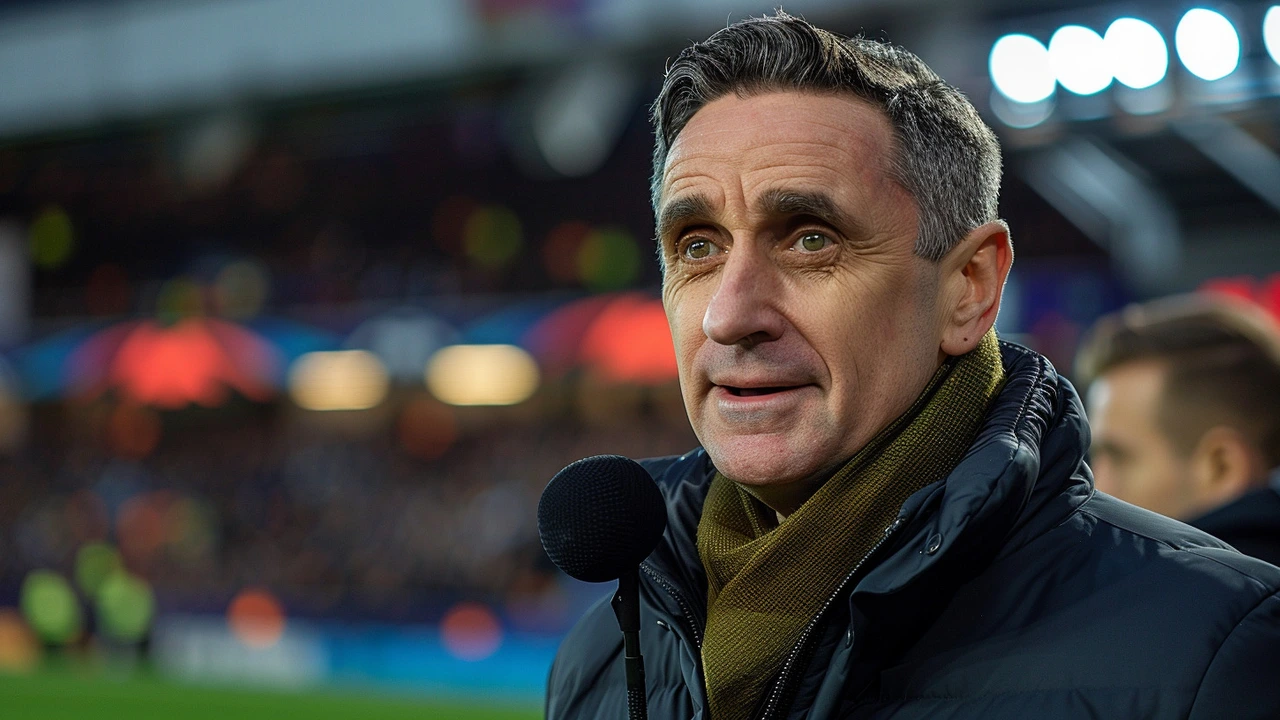Gary Neville's Misstep: Apology Issued After Misdescribing Tottenham Stadium
29 Apr, 2024During a live sports broadcast, comments can swiftly transition from being mere observations to controversial statements. This was precisely the case with Gary Neville, the renowned football pundit and former Manchester United player, who recently found himself at the center of a contentious debate following remarks he made regarding the architectural design of the Tottenham Hotspur Stadium. Neville's off-the-cuff description of the stadium as resembling 'a bowl of water' ignited a flurry of criticism, setting the stage for a conversation about respect, intent, and perception in sports commentary.
Unintended Controversy
It was during a routine broadcast that Neville, tasked with analyzing the game, shifted his focus to the surrounding infrastructure of Tottenham Hotspur. His comparison of the stadium to a 'bowl of water' was intended as a benign simile. However, the comment was quickly met with disapproval. Critics pointed out that the stadium's design was actually meant to symbolize a ship's hull, honoring Tottenham’s maritime heritage - a striking disconnect from Neville's description.
Design and Symbolism of Tottenham Hotspur Stadium
The Tottenham Hotspur Stadium has been lauded for its innovative design and cutting-edge features, conceptualized to pay tribute to Tottenham's historical roots as a shipbuilding hub. The stadium's outer structure mimics the robust, curving forms of a ship's hull, and this architectural choice serves as a nod to the town’s legacy. The design not only embodies a deep respect for history but also stands as a testament to merging tradition with modern aesthetics and functionality.
Immediate Backlash and Neville’s Apology
The backlash that ensued after Neville’s comment was swift and widespread. Social media platforms, sports forums, and comment sections on news outlets buzzed with reactions, ranging from mild disappointment to stern criticism. Acknowledging the gravity of the misunderstanding, Neville took to Twitter to express his apologies. In his statement, he admitted to mistakenly interpreting the architectural intent of the stadium and extended his sincerest apologies to those who felt slighted by his remark.
The Role of Pundits in Sports Media
This incident brings to the forefront the significant influence that sports commentators wield over public perception and the importance of their words. As figures who bridge the gap between the game and its audience, their commentary can sometimes uplift but also, inadvertently, offend. It’s a delicate balance, requiring not just knowledge of the sport but an understanding of its wider cultural and historical contexts.
In conclusion, Gary Neville’s recent commentary mishap serves as a reflective moment for sports media, reminding all involved of the responsibilities that come with the microphone. The quick resolution and Neville’s willingness to correct his error demonstrate his professionalism. Nevertheless, it also highlights the continuous need for awareness and sensitivity towards the diverse elements that constitute the sporting world.

 by
by